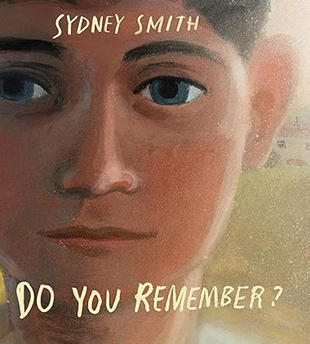We often think of "being present" as living in the moment that's available to our senses. That's not wrong, but it's also not the whole picture. Through memory, we can be present to the past, as a way of integrating and appreciating it; and through anticipation, we can be present to the future, as a way of shaping it in the best possible manner. This book is about that conscious interweaving of past, present, and future.
A mother and son lie side by side, sharing one memory after another, each starting with the phrase "Do you remember ...?" Most of these memories have a gentle touch of suspense, like recalling when she let go of him on his new bike and he fell. The concerned reader wonders if he was okay, and the next page tells us, "I could hear you laughing from the haypile."
The subtlety of Sydney Smith's paintings adds much depth to this story. The four different "Do you remember" page spreads simply show the mother on the left and the boy on the right, but slight changes in their expressions and positions and the gradually growing light make each a distinct and beautiful illustration of their relationship.
The fourth memory is of packing all their belongings in their truck and leaving their home behind. The story wisely leaves an ambivalence about whether this is a welcome or a difficult move, allowing readers ages four to eight to interpret the change in whatever way is most meaningful to them.
It's when this mother-son pair imagine how the present might sound if they phrased it as a memory that the story takes a unique and hopeful turn. We know that their family will be fine, ultimately, because they know how to craft their story in a positive and healing way, drawing especially on the senses. ("We could hear the buses rumbling. We could smell the bakery across the street.")
Sydney Smith lives in Halifax, Nova Scotia and writes and illustrates children's books. (See our review of My Baba's Garden for another extraordinary example of his art.) His accolades include the 2018 Kate Greenaway Medal, two Governor General’s Awards for Illustrated Children’s Books, four successive New York Times Best Illustrated Children’s Book of the Year citations, and an Ezra Jack Keats Award for Writing.
